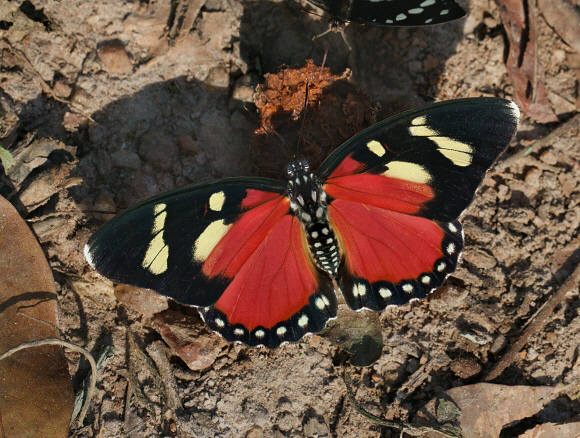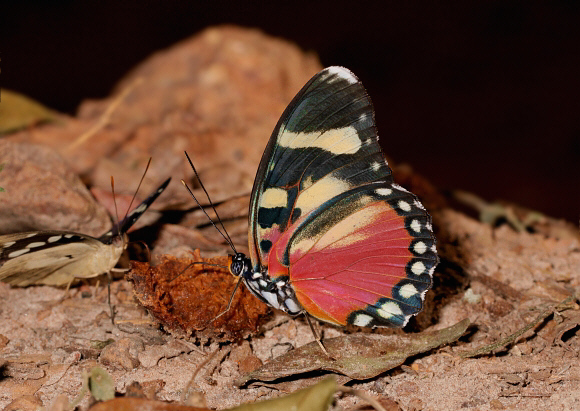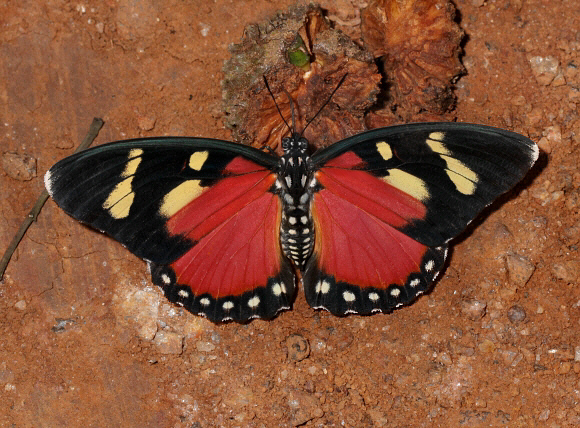
Introduction
The genus Euphaedra comprises of a yet to be discerned number of large and very beautiful forest-dwelling butterflies, all found on the African continent. In 1997 Hecq revised the genus and at that time listed a total of 180 species. This figure is challenged by other workers who believe that many of these are merely local forms or subspecies. However in 2012 Hecq produced a further revision of the eleus species-group, describing an additional 12 species, bringing the total in the genus to 192. When working in the field it is immediately obvious that there are a huge number of specimens that are noticeably dissimilar to any of the insects illustrated by Hecq but it is unclear whether these are examples of intra-specific variation, distinct taxa or hybrids.
All Euphaedra species share a common wing shape. Most have a similar pattern on the upperside – typically the basal areas of the wings ( particularly the hindwings ) have large suffused patches of metallic blue, green, orange or red. Most species also have a cream or orange sub-apical bar. The undersides are usually some shade of yellow or green, marked with black spots and streaks that vary in intensity and configuration according to taxon and locality. Many species including janetta and sarcoptera also have beautiful pink patches or streaks on the underside hindwings.
Euphaedra perseis is one of several red Euphaedra species which mimic the day-flying Geometrid moth Aletis helcita. The latter is unpalateable, so a bird that has tasted one quickly learns to avoid attacking any similarly coloured insect.
The butterfly is distributed from Guinea and Sierra Leone, to western Ghana.
Habitats
This species inhabits the wetter rainforests, and is found at altitudes between about 100-600m.
Lifecycle
The lifecycle appears to be unknown.

Adult behaviour
Both sexes fly close to the ground, and patrol along forest paths in search of fermenting fruits, of which they are very fond. They rarely settle in the open however, preferring the shadier paths, or glades where dappled sunlight filters through the foliage to reach the forest floor.

